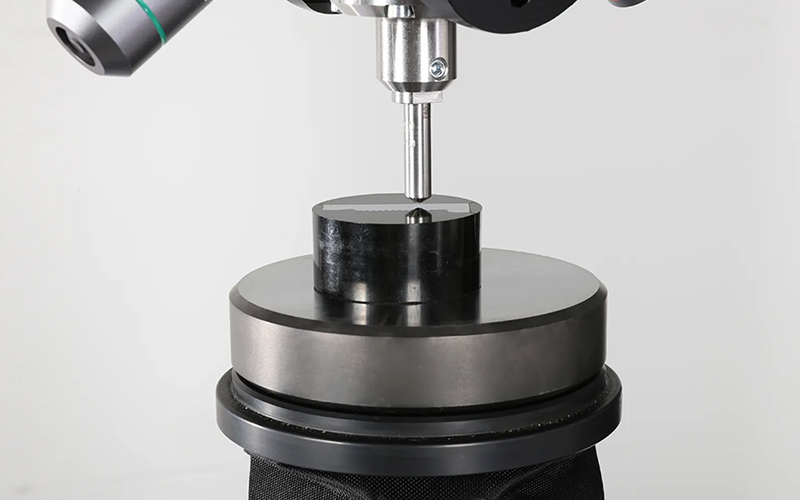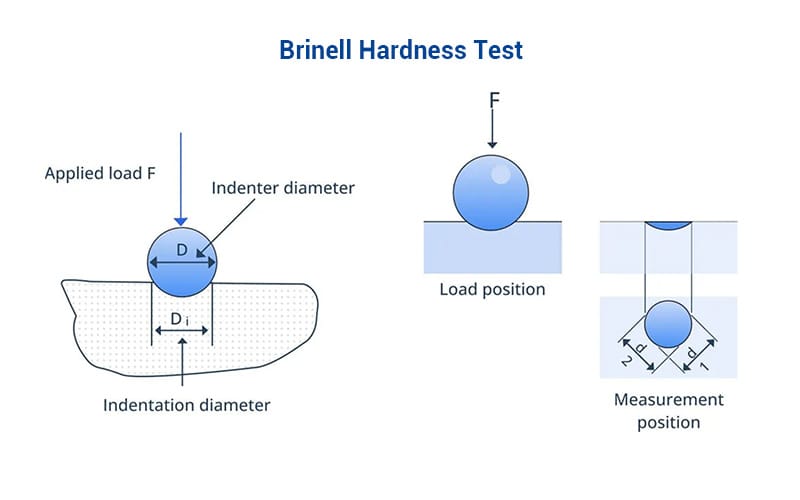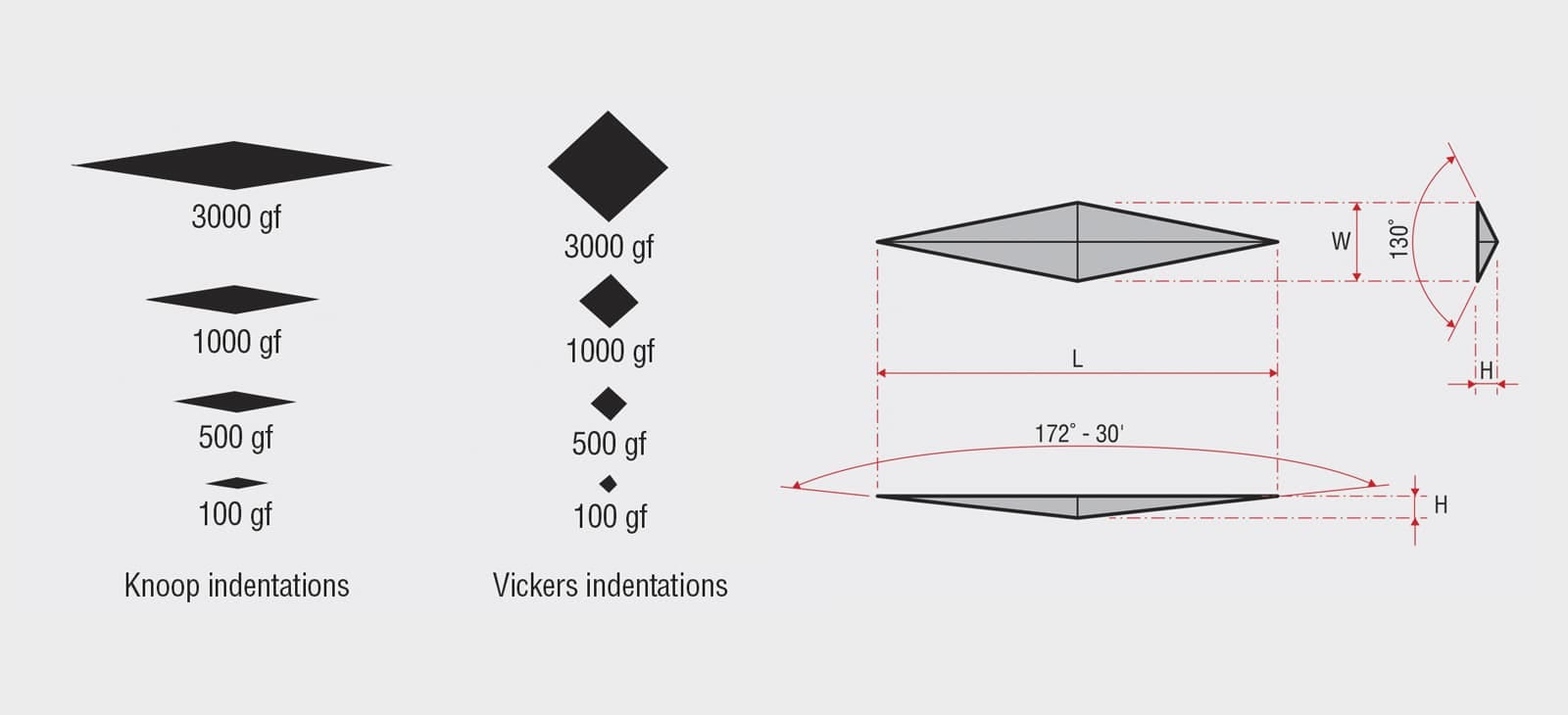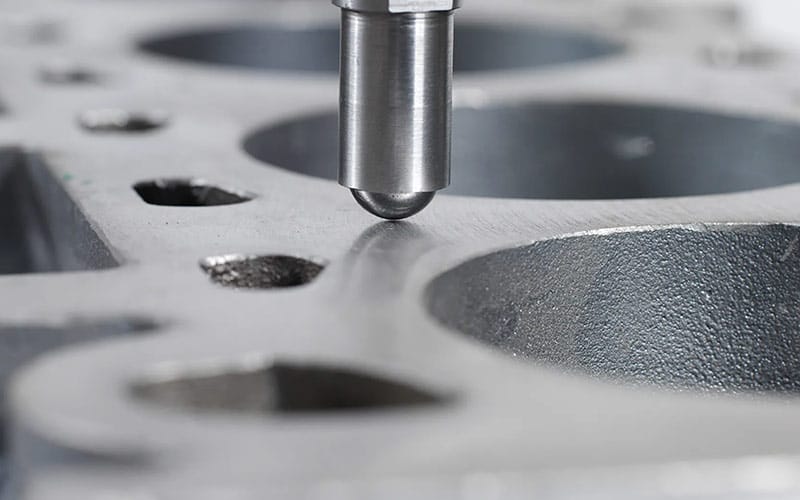Material hardness is important in engineering and manufacturing, knowing how materials respond to stress, force, and wear is vital. This article discusses why it matters and outlines the various types of hardness. It also touches on hardness testing methods, and highlights its role in industries ranging from aerospace to biomedical engineering.

Contents
What Is Material Hardness?
Material hardness determines a material’s ability to withstand and resist localized permanent deformation, also known as plastic deformation. This deformation is usually in the form of scratching, surface indentation, or abrasion. Material hardness indicates how well a material resists local plastic deformation, such as scratching, indentation, or abrasion.
Systematic hardness testing began with Friedrich Mohs’ scratch scale in 1812; quantitative indentation methods (Brinell) were introduced in 1900. Although hardness alone cannot indicate the strength or durability of a material, it shows other mechanical properties such as toughness, tensile strength, etc. That is why it is important to properly understand the different types of hardness.
Material Hardness Importance
Material hardness is very important in manufacturing, understanding how hard a material is can greatly enhance quality control. For example, extremely hard metals like tungsten and chromium are used in cutting tools, aerospace parts, and coatings. This is due to their resistance to deformation and abrasion. On the other hand, softer metals like gold, which is highly malleable and has low hardness, are suitable for jewelry and microelectronic contacts. Gold is used in cases where being conductive and malleable are more critical than having a durable surface.
Understanding hardness helps engineers choose the best material for a given task. If not material selection, then it is making accurate production a lot easier, as parts can be shaped and finished to meet exact design requirements. It also influences machining parameters, surface finishing processes, and maintenance expectations across various industries.
Types of Material Hardness
There are three different types of hardness which are all measured differently, and would have different values if all tested on one material.
Indentation Hardness
Indentation hardness is measured by applying a single, controlled load with an indenter and evaluating the size or depth of the resulting impression. Here, a permanent deformation is made using an indenter, and the resulting indentation is measured to get the hardness value. This hardness type uses testing methods like Knoop, Brinell, Vickers, and Rockwell.
Scratch Hardness
Scratch hardness measures a material’s ability to resist surface scratching produced by a harder tip dragged across its surface. The Mohs Scale is a typical testing method for this hardness type.
Rebound Hardness
Rebound hardness, also called dynamic hardness, doesn’t measure plastic hardness like the aforementioned types, rather, it measures elastic hardness. A diamond-tipped hammer is used for the test. In this case, the hammer is dropped on the sample which returns the energy to the hammer, thereby causing a rebound. The hardness is determined by measuring the hammer’s bounce once it hits the sample surface. This is known as the rebound height. The rebound hardness value increases as the rebound height gets closer to the dropping height. The Leeb hardness test is the go-to method for this hardness type.
Hardness Testing Methods
The following are some common hardness testing methods.
Mohs Hardness Test
The Mohs hardness test compares how well a material can resist being scratched by another. It uses 10 reference materials for the test, and they are ranked from softest being talc (1) to hardest being diamond (10). It’s a simple field test often used by geologists but doesn’t offer quantitative accuracy.
Brinell Hardness Test
In the Brinell hardness test, a steel or tungsten carbide ball is pressed into the material using a standard load, and the diameter of the indentation is measured. Brinell testing is commonly used on castings, forgings, and soft metals due to its ability to handle coarse structures.

Rockwell Hardness Test
The Rockwell hardness test uses a steel or diamond cone (or ball) and measures the depth of indentation under minor and major loads. It’s favored in quality control environments because it is fast, repeatable, and can test finished products without destroying them.
Vickers Hardness Test
The indenter used here is diamond-shaped, and this test is suitable for very small samples, thin films, or coatings. The Vickers hardness test provides high precision and can be used for a wide range of materials, from soft metals to ceramics.
Knoop Hardness Test
The Knoop hardness test is quite similar to the Vickers method but uses an elongated diamond-shaped indenter. It is better employed for microhardness testing on thin layers or coatings where only a small amount of surface damage is allowed.

Factors Affecting Material Hardness
Crystalline structure
Grain size and grain boundaries can influence how deformation occurs in a material.
Heat treatment
Processes like quenching, annealing, and tempering change the internal structure and significantly affect hardness.
Alloy composition
Adding elements like vanadium, chromium, or carbon to metals can increase the material hardness.
Surface coatings
Surface techniques or treatments like anodizing or nitriding can increase surface hardness with retained core flexibility.
Work hardening
Deforming a material through processes like hammering or rolling can increase dislocation density, which in turn increases hardness.

Applications of Hardness Testing
Hardness testing is useful across several industries and applications, including:
Manufacturing Tools
Hardness testing helps manufacturers make tools that maintain sharp edges and shape when stressed. Such tools include cutting tools and molds; the tests ensure they can withstand operational loads.
Aerospace Components
Lightweight materials used in aerospace must have high resistance to deformation. Hardness tests help to align these parts with the desired quality standards.
Biomedical Implants
Biomedical implants like prosthetics, surgical instruments, and orthopedic implants undergo hardness testing. This is to ensure longevity, durability, and patient safety while in use over long periods.
Quality Control
From automotive to electronics, hardness testing is part of the standard checklist for quality assurance in production lines. It helps detect material inconsistencies and manufacturing defects.
FAQ
How Is Hardness Different from Strength or Toughness?
Hardness measures a material’s resistance to localized surface deformation, like scratching or indentation. Strength, particularly tensile strength, refers to how much load a material can withstand before breaking or deforming. Meanwhile, toughness is the material’s ability to absorb energy and experience plastic deformation before fracturing. For example, glass is very hard but not tough; it breaks easily when struck.
Can the Hardness of A Material Be Changed After Manufacturing?
Yes, several post-processing techniques can change the hardness of a material. For example, heat treatments such as quenching, annealing, and case hardening are used to adjust the internal structures of metals. Other methods include cold working, which mechanically strengthens materials by deforming them at room temperature, same with surface treatments like carburizing or nitriding.
Which Hardness Test Is Best For Plastics and Polymers?
For polymers, the Shore Durometer test is the most appropriate. This method uses different durometer scales (like Shore A or Shore D) depending on the hardness of the plastic. For softer polymers, Shore A is used, while Shore D works for harder plastics like nylon or polycarbonate.
Is There A Widely Accepted Hardness Scale That Can Measure All Materials?
No, there isn’t a universal or widely accepted hardness scale that works for all materials, because each hardness test is used for specific materials. For example, if you want to measure softer or coarse-grain materials, Brinell would be best, while Leeb works for on-site tests. Hard and thin-coated materials are measured with Vickers and Knoop tests, because they work better for microstructures. These tests use different methods, loads, and conditions; therefore, their hardness values are incomparable across all materials.
What Are the Limitations of Hardness Tests?
The limitations of hardness tests include:
- The success of hardness tests is dependent on the surface preparation. This means that the presence of dirt, coatings, or other irregularities can affect results negatively.
- Hardness values from different scales cannot be compared across different materials; for example, Rockwell and Vickers values aren’t directly interchangeable.
- There are sample requirements; some methods need samples with flat, polished surfaces or minimum material thickness for accurate results.
- Manual tests like Brinell or Vickers are limited to operator capabilities, and this can produce inaccurate results due to human error.



